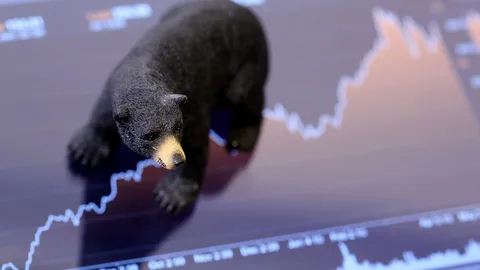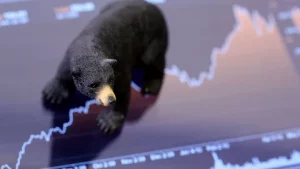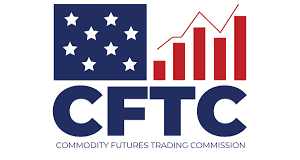
The increase in the number of online traders has staggeringly increased in the last few years. As more and more convenient trading opportunities are created by the use of Artificial Intelligence and Automated Trading, new traders will continue to rise. However, many newcomers are unaware of trading principles and don’t know what terms such as bear market trading, market volatility, and trading indicators mean. For today’s blog, we will talk about everything you need to know about automated trading and how to start away. So let’s dive right into it.
What Is Automated Trading?
Automated Trading Systems refer to using an algorithm to make forecasts and create trading orders to buy or sell a commodity or stock option. In some cases, Artificial Intelligence is also used in automated trading to increase the success ratio.
This method of trading is extremely popular for new traders who aren’t sure about which trades to lock in. It is also suitable for traders who are unable to make instant trades at the right time. Since these trading systems are automated, they help the process of buying and selling and make everything convenient.
Characteristics of Bull and Bear Markets
Bull and Bear Marketing Trading are 2 sides of the same coin. When the market index increases by at least 20%, the market is said to be a bull market. On the other hand, if there is a downturn in the market index and the index decreases by at least 20%, the market is labeled as a bear market.
Usually, bull markets last longer than bearish ones and showcase the stability and rise of the economy. Meanwhile, Bear markets exist in economies that are receding as they show a downfall.
The terms bullish and bearish can also be used to refer to investment mentalities. A bullish investor usually invests when the price trend is showing an increase in the upcoming period while a bearish trader looks for downward spikes, and uses the selling options strategy to make their profits. A vast majority of traders have bullish behavior in the US.
Both kinds of markets can be unpredictable, especially when trading a highly volatile commodity. Sudden price swings and unpredictability are difficult for some traders to manage, especially traditional investors who rely primarily on the concepts of supply and demand to make their forecasting. On the other hand, some investors may also profit from the volatility by making quick trades and working as day traders.
Benefits of Automated Trading
Automated trading is beneficial for a number of reasons. Here are some of them:
- Discipline and Emotionless: Automated Trading is more popular in bearish markets as it eliminates the human factor from trading in a volatile market. In many cases, traders make the wrong move or enter a non-profitable trade. Automated systems follow your trading strategies and trade within a specific range. Human error does not happen with automated trading and the volatility of the market can be used to make quick gains.
- Ability to go long or short: Automated Systems are, well, Automatic. They can perform in any capacity as the traders want. Whether a trader wants to invest in an option for a short time or go with the buy-and-hold strategy for long-term gains, automated systems can be used to cater to their trading strategies and land them in profitability.
- Set stops and risk management: One of the most important aspects of trading is risk management and stopping your losses. The automated systems can be tuned to determine the best risk management strategies so that a lot of investment does not go into a single trade, increasing the stakes. Traders can also set up stops and cut their losses if the price fluctuation is too much to handle. This results in more efficient trading and helps traders in following their strategies.
Successful Trading
A trader’s success is judged upon his/her ability to convert more successful trades than failed ones. Whether you prefer bullish markets or rely upon bear market trading, it is crucial to use price fluctuations to your advantage.
Trading in highly volatile markets requires a trader to be quick at decision-making and adapt to changing market conditions vigilantly. Using automated systems to achieve this is a great option but relying on them completely can also backfire as these automated systems work in a specific capacity only.

Finding the Best Automated System
There are many automated systems available on the market and while some might work for you, others may not. Hence, finding a tool that suits your own trading strategies is important. One of the most widely used Automated Trading Systems is the ATS provided by Platinum Trading Solutions. This automated system can be used for both swing trading and day trading which means that traders can fully utilize the volatile markets to make their profits.
Importance of Understanding Market Dynamics
Before you go off to trading in bearish markets with automated systems, it is essential to understand the market dynamics and trends. Bearish markets are completely different than bullish ones. The prices and trends can be affected by a number of things such as geopolitical events, global news, or a change in supply and demand.
Experienced traders must always consider the factors affecting market dynamics before they make their forecasting or set up their strategies with automated systems.
What To Consider Before Trading?
Before we get down to trading, let’s take a look at some of the factors that you should consider before trading:
- Political instability or international conflicts can disrupt supply chains, causing uncertainty and price fluctuations.
- Economic stability on national and international levels is also important to understand the market conditions.
- Supply and demand, the fundamental principles of economics, can cause a market to be volatile. An increase in demand or a decrease in supply can lead to higher prices and vice versa.
- The strength of currencies in relation to each other can also alter the market dynamics and should be considered, especially when trading commodities.
Trading Indicators
Most traders use trading indicators such as Moving Averages or the MACD to notice trends and create their daily trading strategy accordingly. In some cases, it is also important to check the Relative Strength Index or Bollinger Bands to notice volatility in the market and determine if it is suitable to enter a trading session.
See Our – Why use an Automated Trading System ATS
See Our Limited Time “Promo Offer” and see how you can become our Client!














